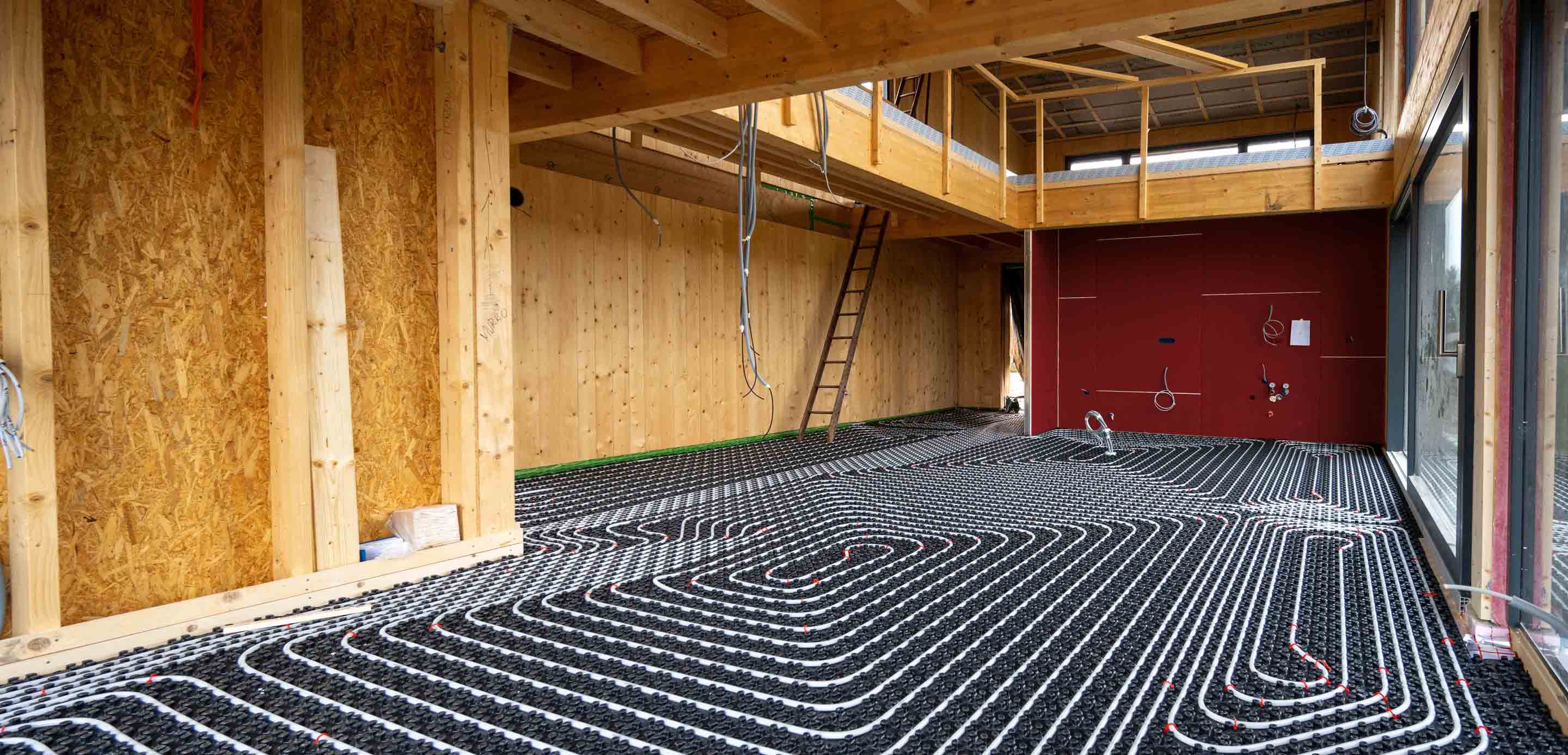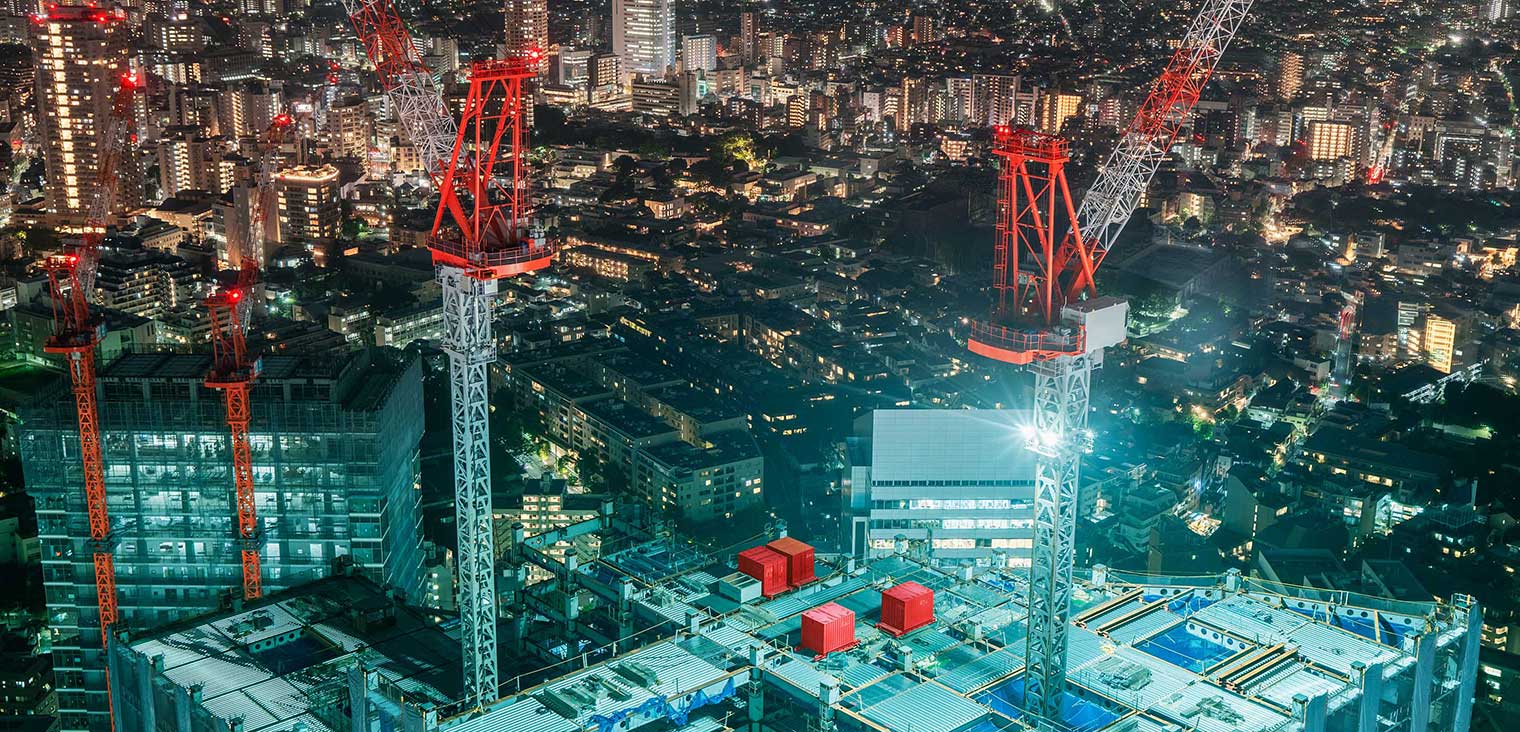- Article

- Infrastructure and Sustainable Finance
- Transition to Net Zero
- The Future of Infrastructure
- General Sustainability
How retrofitting buildings can cut emissions and unlock value
The pathway to net zero emissions in the real estate sector will require major upgrades to existing building stock, including the electrification of operations and switching to renewable energy. Retrofitting, however, is expensive. How can property owners turn this challenge into opportunity?
Putting the real estate sector on track to reach net zero emissions by 2050 will be a monumental task. While zero-carbon new buildings are now on the drawing board, property owners will also need to eliminate the emissions from their existing assets. That means electrifying building operations so they can run on clean energy, as well as making significant improvements to energy efficiency.
To underline the scale of the challenge, property services firm JLL calculates that about 80% of office buildings in mature cities will still be in use in 2050. Retrofitting those assets across 17 major countries will cost at least USD3 trillion.1
This article explores key questions facing the real estate industry and the actions stakeholders are taking to accelerate their transition.
Listen now
To hear more on this topic, listen to our latest episode where we explore retrofitting trends and outlooks from both a UK and Asia perspective with guest speakers Matt Mason, Partner and Head of Development at Crosstree Real Estate Partners in the UK, and Annie Feng, Sustainability Lead for Asia Pacific at Arcadis. Listen now on HSBC Talks Business via Apple Podcasts, Spotify or wherever you get your podcasts.
Why is refitting buildings moving up the agenda?
Refurbishing commercial property to modern energy-efficiency standards generally produces less carbon than demolishing and rebuilding. In line with national emissions targets, regulators are increasingly pushing real estate owners in that direction.
Tenants, occupiers and investors are therefore increasingly taking account of a building’s carbon footprint across its entire lifecycle2– not just by its ongoing operation, but including emissions produced by its construction and demolition – and more data is becoming available for this purpose.3
What’s more, retrofitting has been shown to increase yields. Buildings with stronger sustainability credentials are achieving markedly higher capital values and rents, according to recent JLL research on the London office market.4 Investors and companies are increasingly looking to buy or occupy green buildings to align with their own net zero strategies.
Ultimately, retrofitted buildings offer positive long-term savings, as has been demonstrated by the recent energy crisis. They are better protected against energy price increases because they can generate their own energy and even potentially sell it back into the grid.5
How are regulators pushing for action?
In several developed markets, governments are pushing for improvements in energy efficiency, which will require property owners to retrofit many real estate assets.
The European Commission says renovating buildings is essential for the energy transition and will be key to driving energy efficiency in the sector as part of the European Green Deal, a package of policy initiatives that aims to get the EU to climate neutrality by 2050.
Other jurisdictions are taking action too.
Singapore announced in March this year that energy-intensive buildings will from end-2024 have to undergo energy audits and implement measures to improve their energy use if their performance is poor.6
Whilst New York City Council had passed legislation in April 2019 requiring all buildings of 25,000 square feet or larger to reduce their greenhouse gas emissions by 40% by 2030 and by 80% by 2050.7
What are the main drivers for achieving net zero in the property sector?
According to our latest Transition Pathways survey of real estate developers and investors, the electrification of operations and installation of EV charging onsite ranked as the transition initiatives with the greatest impact, followed by securing and switching to renewable energy sources.
The electrification of operations and securing renewable energy generation are also two of the top three capex spending priorities in the real estate sector globally, with energy efficiency improvements rounding out the list. These are also two of the top four areas of action that respondents have taken towards the transition.
There are, however, challenges. Far fewer respondents (15%) say they have taken action on electrification than say it will have a significant impact (45%). But that looks set to change, given that real estate developers and investors plan to increase their transition-related capex spending.
What are the key methods and technologies for reducing emissions from existing buildings?
The operations of buildings account for 26% of global energy-related emissions (8% being direct emissions in buildings and 18% indirect emissions from the production of electricity and heat used in buildings).8
Direct emissions come from use of gas and oil for heating and cooling, so switching those power sources to electricity will be key. Electricity will get cleaner over time as renewables’ share of power generation grows.
Energy-efficient solutions are also needed to cut indirect emissions, such as:
- Electrification of onsite processes: Replacing gas boilers or diesel-powered machinery with electric equipment can lead to a dramatic reduction of operational carbon emissions. In our latest survey, 46% of real estate businesses said electrification would have a big impact on their direct or indirect emissions, making it by far the most impactful transition activity.
- Improving insulation: Enhancing insulation and sealing gaps in walls, roofs, windows and doors helps prevent heat loss or gain and can significantly improve energy efficiency. Cavity walls that are not insulated can potentially lose 35% of heat generated, while an average commercial building with a flat roof that is not properly insulated could lose about 25% of its heat.9
- Upgrading lighting: LED lights consume up to 75% less energy than traditional incandescent bulbs and last up to 25 times longer.10 In addition, installing motion sensors can optimise lighting usage in areas with low occupancy or sufficient natural light, respectively.
- Improving heating, ventilation and air conditioning (HVAC): Upgrading HVAC systems to more smart and efficient models, or replacing pumps, fans and motors, can lead to substantial energy savings. Installing programmable thermostats and using zoning strategies can help optimise temperature control. Depending on the region, installing more efficient HVAC equipment can potentially halve energy use.11
- Better monitoring of energy usage: Modern buildings should enable centralised control of systems, allowing real-time monitoring of energy consumption in different areas, as smart building automation can reduce energy consumption by 10-30%.12 Earlier this year, HSBC launched a collaboration with Univers, one of the most innovative net zero technology companies globally13, to support mid-market and large corporates in Hong Kong and Singapore to develop effective end-to-end decarbonisation strategies, supported by Univers' real-time AIoT-based energy optimisation and carbon management solutions.
- Waste reduction and recycling: Incorporating waste reduction and recycling programmes during retrofit projects can help divert construction and operational waste from landfills.
How can tenants help reduce operational emissions?
While energy-efficiency-related building improvements are typically the responsibility of the landlord, tenants’ activities can also have a big impact on the level of operational emissions. In our survey, real estate developers and investors said influencing the behaviour of end-customers, such as tenants, was one of the top methods for reducing scope 3 emissions.
In this regard, the growing use of green leases – like the one HSBC agreed for its new New York headquarters last year14 – is providing some comfort to real estate owners, investors and lenders. These contracts typically impose obligations on the landlord and tenant around things like energy efficiency and waste reduction. But they are now widening in scope to include criteria such as the use of sustainable materials in refits.
How easy is it to access finance for energy efficiency initiatives?
The high costs involved are a major deterrent for property owners and investors, particularly as many want to see clearer regulations around net zero buildings and worry about uncertain payback periods on their expenditure. What’s more, buildings upgrades may impose a loss of rental income, as they can be tricky to carry out with tenants in place.
That said, in addition to providing access to funding for the development of new green buildings, lenders are becoming more focused on provision of financing to support the retrofitting of existing properties to improve energy efficiency across the built environment. A growing number of banks are providing green loans to support energy-efficiency projects.15 In 2019, a group of UK banks, including HSBC, made a five-year GBP450 million revolving credit facility available to Derwent London, one of the largest British real estate investment trusts, which includes a GBP300m tranche specifically available to fund expenditure on green projects.16
What’s more, HSBC, along with other banks, has called on the UK government to implement policies that will support the financing and roll out of energy-efficiency retrofits in homes to reduce energy bills, support green jobs and deliver on the UK’s net zero targets.17
Today we finance a number of industries that significantly contribute to greenhouse gas emissions. We have a strategy to help our customers to reduce their emissions and to reduce our own. Find out more: https://www.hsbc.com/who-we-are/our-climate-strategy
For HSBC’s Transition Pathways survey, HSBC has worked with Kantar, a data, insights and consulting company. The survey is not wholly-representative of HSBC’s customer base and covers respondents across 321 key financial decision makers from businesses operating in the Real Estate sector, comprising Developers (163) and Investors (158) and operated across Residential and Office, Retail and Hospitality and Logistics and Data Centres. Businesses were located in Europe (61, of which 35 were in the UK), Asia (97, of which 43 were in Hong Kong), the Middle East (31) and North/Central America (132). Overall 146 (45%) had a gross asset value below $1.5bn, 67 (21%) had a gross asset value between $1.5bn and $4.9bn and 108 (34%) had a gross asset value in excess of $5bn. 99 (31%) had been established for less than 10 years and 222 (69%) for more than 10 years. Data was collected through an online questionnaire and the survey ran from 5 to 17 July 2023.
In preparing this survey, HSBC has relied upon available data, information and responses given at the time of writing. This report should not form the basis of any third party’s decision to undertake, or otherwise engage in, any activity and third parties do not have any right to rely on it. Neither HSBC nor Kantar accept any duty of care, responsibility or liability in relation to this research or its application or interpretation, including as to the accuracy, completeness or sufficiency of it or any outcomes arising from the same.
1 JLL: Retrofitting Buildings to be Future-Fit
2 Arup: Whole Life Carbon: what is it and how do we reduce it?
3 Arup: Arup announces international dataset of whole life carbon emissions for buildings at COP27
4 JLL: Environmentally sustainable real estate attracts higher prices
5 Sustainability by design: creating the foundation of the UK built environment
7 NYC Sustainable Buildings: Local Law 97
9 Barker: How to improve energy efficiency in commercial buildings
10 Office of Energy Efficiency & Renewable Energy: LED lighting
11 Office of Energy Efficiency & Renewable Energy: Heating, ventilation, and air Conditioning (HVAC)
12 Revitalite: Retrofitting trends in the construction industry 2023
13 Univers: Envision group placed second on Fortune's change the world list 2021
15 From brown to green: financing real estate decarbonisation - energy efficiency series - part 3
16 Derwent London first UK REIT to sign green revolving credit facility
17 HSBC: The UK retrofit conundrum
Transition Pathways
Explore more of the findings and insights on the real estate sector.






